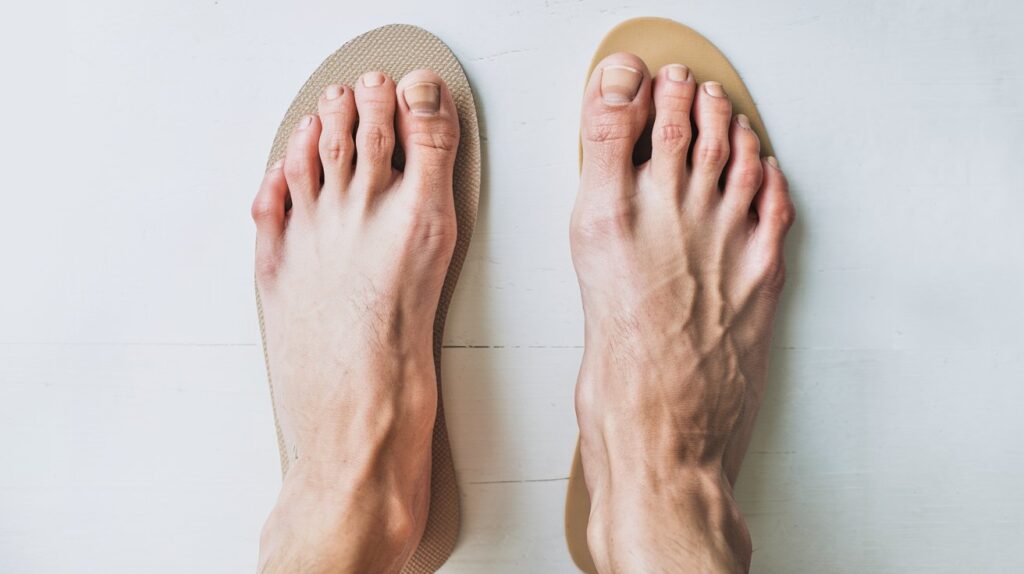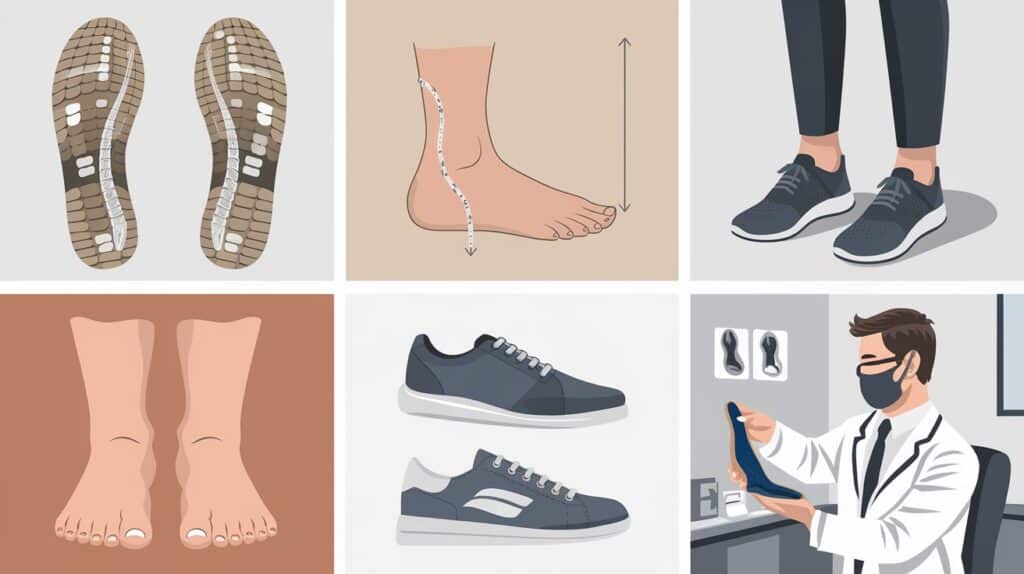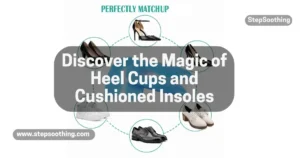Foot pain and discomfort can affect your daily life, making it difficult to walk, stand, or exercise comfortably. Whether you suffer from flat feet, plantar fasciitis, or general foot fatigue, the right support can make a huge difference. That’s where orthotic insoles and shoe inserts come in.
Many people wonder: What’s the difference between orthotics and insoles? Are custom orthotics better than over-the-counter inserts? Do they really help with foot pain?
In this guide, we’ll break down everything you need to know about orthotic insoles and shoe inserts—including their benefits, different types, and when you should consider seeing a podiatrist. By the end, you’ll have a clear understanding of which option is best for your foot health. Let’s get started!
The Ultimate Guide to Orthotic Insoles & Shoe

What Are Orthotics & Shoe Inserts?
What Are Orthotics?
Orthotics, also called foot orthoses, are medical devices designed to correct foot alignment and provide support. They can be:
- Custom-made: Prescribed by a doctor and tailored to your feet.
- Over-the-counter (OTC): Pre-made insoles available at stores.
What Are Shoe Inserts?
Shoe inserts are non-prescription insoles that provide extra cushioning but do not correct biomechanical issues. Common examples include:
- Gel or foam insoles
- Arch supports
- Heel cups
Related Articles:Common Misconceptions about Orthotics
What Foot Problems Require Orthotics?
Orthotics help treat many foot-related issues, including:
- Plantar Fasciitis – Heel pain caused by inflammation of the foot’s arch.
- Flat Feet & Fallen Arches – Lack of arch support, leading to foot strain.
- High Arches & Supination – Poor weight distribution and instability.
- Diabetic Foot Pain – Pressure relief for neuropathy-related discomfort.
- Arthritis & Bunions – Pain management for joint and toe deformities.
- Lower Back & Knee Pain – Foot misalignment that affects posture.
Signs You Need Orthotics
You might need orthotics if you experience:
✅ Persistent foot pain or discomfort while walking or standing.
✅ Uneven shoe wear patterns, indicating misalignment.
✅ Frequent injuries (shin splints, stress fractures).
✅ Balance issues or posture problems affecting movement.
Related Articles:Expert Tips on choosing the Right Insoles
How Orthotics Work: Function & Benefits
What Does an Orthotic Do?
Orthotics work by correcting foot alignment, redistributing pressure, and improving posture. They:
- Provide arch support to prevent overpronation or supination.
- Absorb shock to reduce foot and joint pain.
- Improve weight distribution to prevent pressure points.
What Are the Potential Benefits of Orthotics?
⭐ Pain relief for foot, knee, hip, and back conditions.
⭐ Enhanced support & stability for better mobility.
⭐ Prevention of injuries caused by poor foot mechanics.

Different Types of Orthotics & Shoe Inserts
Custom Orthotics vs. Over-the-Counter Inserts
| Feature | Custom Orthotics | OTC Inserts |
| Designed for | Specific foot conditions | General support & comfort |
| Cost | Higher ($200-$800) | Lower ($20-$60) |
| Effectiveness | High (corrects biomechanics) | Moderate (adds cushioning) |
Types of Orthotics
- Rigid (Functional) Orthotics – Corrects structural issues.
- Soft (Accommodative) Orthotics – Adds cushioning for pressure relief.
- Semi-Rigid Orthotics – A balance of support and flexibility.
- Sport-Specific Orthotics – Designed for athletes and active users.
Related Articles:Do you need a prescription for Orthotics?
Prescription Custom Orthotics vs. Shoe Inserts
What Are Prescription Custom Orthotics?
- Made based on a doctor’s evaluation.
- Designed to correct foot problems rather than just provide comfort.
- Often covered by insurance for medical conditions.
Choosing the Right Over-the-Counter Shoe Insert
If you opt for OTC insoles, consider:
✅ Arch support level (low, medium, high).
✅ Material type (gel, foam, rigid).
✅ Activity level (daily walking vs. sports).
Related Articles:Compatibility of Orthotics with Different Shoes
Do Orthotics Really Help? Myths & Evidence
❌ Myth: “Orthotics weaken foot muscles.”
✅ Truth: Orthotics support proper alignment but don’t replace foot exercises.
❌ Myth: “Only custom orthotics work.”
✅ Truth: Many OTC inserts offer relief when chosen correctly.
❌ Myth: “Orthotics cure all foot problems.”
✅ Truth: They help manage symptoms but may not fix severe conditions.
Wearing & Maintaining Orthotics: What to Expect
How Long Do I Have to Wear Orthotics?
- Wear them gradually to allow your feet to adjust.
- Start with 1-2 hours per day, increasing over a week.
How Long Do Orthotics Last?
| Type | Lifespan |
| Custom Orthotics | 2-5 years |
| OTC Insoles | 6-12 months |
Maintenance Tips
🔹 Clean regularly with mild soap and water.
🔹 Avoid heat exposure (can deform the material).
🔹 Replace when worn out to maintain effectiveness.
Related Articles:Expert advice on managing Foot Pain
When to Visit a Podiatrist or Call a Doctor
🚨 See a podiatrist if you experience:
- Persistent foot, knee, or back pain.
- Orthotics causing new discomfort.
- Signs of nerve damage (numbness, tingling).
A Note from Medical Experts
According to foot specialists at the Cleveland Clinic, properly fitted orthotics can significantly improve mobility and reduce pain, especially for those with chronic foot conditions. They emphasize that correct diagnosis and professional evaluation are key to finding the right orthotics.
Conclusion: Prioritizing Foot Health
✅ Summary of Key Takeaways
- Orthotics provide support, pain relief, and better posture.
- Custom orthotics are best for serious foot conditions, while OTC inserts work for general support.
- Regular use can prevent future foot and joint problems.
Final Tip: If you experience ongoing foot discomfort, consult a podiatrist for professional advice on the best orthotic solution for you.
People Also Asked
How do I know if I need orthotics?
You may need orthotics if you experience persistent foot pain, uneven shoe wear, balance issues, or frequent injuries like shin splints or stress fractures. A podiatrist can assess your gait and foot structure to determine if orthotics are necessary.
What is the difference between custom orthotics and over-the-counter insoles?
Custom orthotics are specially designed based on a podiatrist’s assessment to correct foot alignment and treat specific conditions, while over-the-counter (OTC) insoles provide general arch support and cushioning but do not correct biomechanical issues.
How long do orthotic insoles last?
Custom orthotics typically last between 2 to 5 years, depending on usage and material quality, while OTC insoles usually need to be replaced every 6 to 12 months as they wear out faster.
Can orthotics help with knee and back pain?
Yes, foot misalignment can contribute to knee, hip, and lower back pain. Orthotics help by improving foot posture, distributing weight evenly, and reducing strain on joints and muscles.
How do I break in new orthotics?
Start by wearing them for 1-2 hours a day, gradually increasing wear time over a week. Some mild discomfort is normal as your feet adjust, but if pain persists, consult a podiatrist for adjustments.



